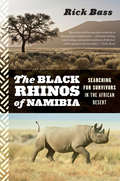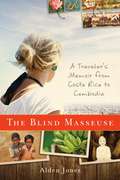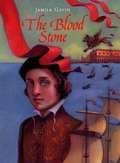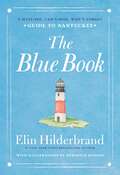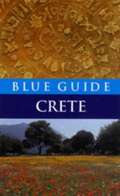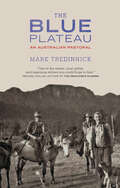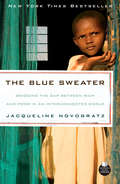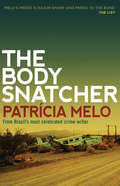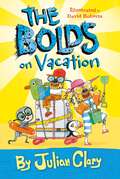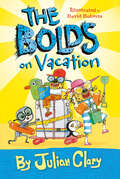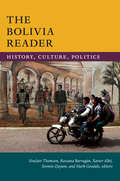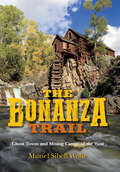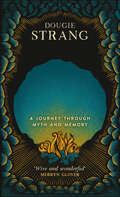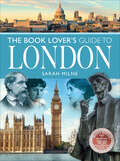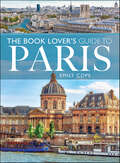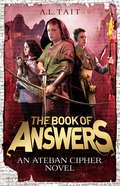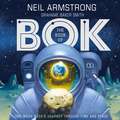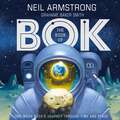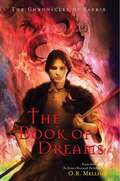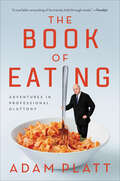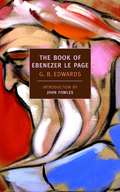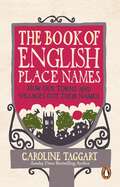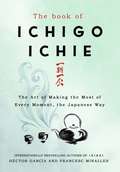- Table View
- List View
The Black Penguin
by Andrew EvansA devout young boy in rural Ohio, Andrew Evans had his life mapped for him: baptism, mission, Brigham Young University, temple marriage, and children of his own. But as an awkward gay kid, bullied and bored, he escaped into the glossy pages of National Geographic and the wide promise of the world atlas. The Black Penguin is Evans's memoir, travel tale, and love story of his eventual journey to the farthest reaches of the map, a wild yet touching adventure across some of the most astonishing landscapes on Earth. <P><P> Ejected from church and shunned by his family as a young man, Evans embarks on an ambitious overland journey halfway across the world. Riding public transportation, he crosses swamps, deserts, mountains, and jungles, slowly approaching his lifelong dream and ultimate goal: Antarctica. With each new mile comes laughter, pain, unexpected friendship, true weirdness, unsettling realities, and some hair-raising moments that eventually lead to a singular discovery on a remote beach at the bottom of the world. <P><P> Evans's 12,000-mile voyage becomes a soulful quest to balance faith, family, and self, reminding us that, in the end, our lives are defined by the roads we take, the places we touch, and those we hold nearest.
The Black Rhinos of Namibia
by Rick BassFrom one of our most gifted writers on the natural world comes a stunning exploration of a unique landscape and the improbable and endangered animal that makes its home there.Rick Bass first made a name for himself as a writer and seeker of rare, iconic animals, including the grizzlies and wolves of the American West. Now he's off on a new, far-flung adventure in the Namib of southwest Africa on the trail of another fascinating, vulnerable species. The black rhino is a three-thousand-pound, squinty-eyed giant that sports three-foot-long dagger horns, lives off poisonous plants, and goes for days without water.Human intervention and cutting-edge conservation saved the rhinos--for now--from the brink of extinction brought on by poaching and war. Against the backdrop of one of the most ancient and harshest terrains on earth, Bass, with his characteristic insight and grace, probes the complex relationship between humans and nature and meditates on our role as both destroyer and savior.In the tradition of Peter Matthiessen's The Tree Where Man Was Born, Bass captures a haunting slice of Africa, especially of the "black" rhinos that glow ghostly white in the gleaming sun.
The Blind Masseuse
by Alden JonesThrough personal journeys both interior and across the globe, Alden Jones investigates what motivates us to travel abroad in search of the unfamiliar. By way of explorations to Costa Rica, Bolivia, Nicaragua, Cuba, Burma, Cambodia, Egypt, and around the world on a ship, Jones chronicles her experience as a young American traveler while pondering her role as an outsider in the cultures she temporarily inhabits. Her wanderlust fuels a strong, high-adventure story and, much in the vein of classic travel literature, Jones's picaresque tale of personal evolution informs her own transitions, rites of passage, and understandings of her place as a citizen of the world. With sharp insight and stylish prose, Jones asks: Is there a "right" or "wrong" way to travel? "The Blind Masseuse" concludes that there is, but that it's not always black and white.
The Blood Stone
by Jamila GavinIn the 17th century, Filippo travels from Venice to Afghanistan to rescue his imprisoned father, and stops in India to raise the ransom by selling his father's beautiful diamond to Shah Jehan, who later uses the stone as the model for the Taj Mahal.
The Blue Book: A Must-See, Can't-Miss, Won't-Forget Guide to Nantucket
by Elin HilderbrandHalf the fun of an Elin Hilderbrand Nantucket novel is her attention to local detail: the beaches, restaurants, shops, and scenic destinations are as memorable as her plots and characters. For years Elin&’s fans have made pilgrimages to the places they know from her books, and for years they&’ve asked for a single guidebook to &“Elin&’s Nantucket.&” The wait is over: in The Blue Book, the Queen of the Beach Read – and dare we say the Queen of Nantucket – offers readers practical, fun, insider tips: from drive-on beaches to late-night dance bars; from romantic getaways to family outings; from where to find the best oysters to where to buy the best beach towel. Interspersed with scenes from Elin&’s novels set at the locations she recommends, with charming watercolor illustrations throughout, The Blue Book lets readers plan the perfect getaway – and live like the characters in an Elin Hilderbrand novel.
The Blue Guide to Crete (7th edition)
by Pat CameronTravel guide to the island of Crete in the Mediterranean Sea.
The Blue Plateau: An Australian Pastoral
by Mark TredinnickThe author of The Land’s Wild Music depicts Australia’s Blue Mountains through stories of the land and the lives within it.At the farthest extent of Australia’s Blue Mountains, on the threshold of the country’s arid interior, the Blue Plateau reveals the vagaries of a hanging climate: the droughts last longer, the seasons change less, and the wildfires burn hotter and more often. In The Blue Plateau, Mark Tredinnick tries to learn what it means to fall in love with a home that is falling away.A landscape memoir in the richest sense, Tredinnick’s story reveals as much about this contrary collection of canyons and ancient rivers, cow paddocks and wild eucalyptus forests as it does about the myriad generations who struggled to remain in the valley they loved. It captures the essence of a wilderness beyond subjugation, the spirit of a people just barely beyond defeat. Charting a lithology of indigenous presence, faltering settlers, failing ranches, floods, tragedy, and joy that the place constantly warps and erodes, The Blue Plateau reminds us that, though we may change the landscape around us, it works at us inexorably, with wind and water, heat and cold, altering who and what we are.The result is an intimate and illuminating portrayal of tenacity, love, grief, and belonging. In the tradition of James Galvin, William Least Heat-Moon, and Annie Dillard, Tredinnick plumbs the depths of people’s relationship to a world in transition.Praise for The Blue Plateau“One of the wisest, most gifted and ingenious writers you could hope to find.” —Michael Pollan, author of In Defense of Food and The Omnivore’s Dilemma“I’ve never been to Australia, but now—after this book—it comes up in my dreams. The landscape in the language of this work is alive and conscious, and Tredinnick channels it in prose both wild and inspired. . . . Part nonfiction novel, part classic pastoral, part nature elegy, part natural history, the whole of The Blue Plateau conveys a deep sense, rooted in the very syntax of a lush prose about an austere land, that there can be no meaningful division between nature and culture, between humans and all the other life that interdepends with us, not in the backcountry of southeastern Australia, nor anywhere else.” —Orion“Absorbed slowly, as a pastoral landscape of loss and experiment in seeing and listening, the book richly rewards that patience.” —Publishers Weekly
The Blue Sweater: Bridging the Gap Between Rich and Poor in an Interconnected World
by Jacqueline NovogratzThe Blue Sweater is the inspiring story of a woman who left a career in international banking to spend her life on a quest to understand global poverty and find powerful new ways of tackling it. It all started back home in Virginia, with the blue sweater, a gift that quickly became her prized possession—until the day she outgrew it and gave it away to Goodwill. Eleven years later in Africa, she spotted a young boy wearing that very sweater, with her name still on the tag inside. That the sweater had made its trek all the way to Rwanda was ample evidence, she thought, of how we are all connected, how our actions—and inaction—touch people every day across the globe, people we may never know or meet.From her first stumbling efforts as a young idealist venturing forth in Africa to the creation of the trailblazing organization she runs today, Novogratz tells gripping stories with unforgettable characters—women dancing in a Nairobi slum, unwed mothers starting a bakery, courageous survivors of the Rwandan genocide, entrepreneurs building services for the poor against impossible odds. She shows, in ways both hilarious and heartbreaking, how traditional charity often fails, but how a new form of philanthropic investing called "patient capital" can help make people self-sufficient and can change millions of lives. More than just an autobiography or a how-to guide to addressing poverty, The Blue Sweater is a call to action that challenges us to grant dignity to the poor and to rethink our engagement with the world.
The Body Snatcher
by Patricia Melo Clifford LandersThis tightly plotted novel by Brazil's best-selling crime author is a tale of drug dealing gone wrong, police corruption, and macabre blackmail, set in a heat-soaked town in the vast untamed Brazilian lowlands bordering Bolivia. One bright Sunday, alone on the banks of the Paraguay River, the narrator witnesses the fatal crash of a small plane. He finds a kilo of cocaine in the dead pilot's backpack and pockets it along with the pilot's expensive watch. Thus begins the protagonist's long slide into corruption.When police locate the crash site, the pilot's body is missing and a large-scale search ensues. Our hero, now involved in a busted cocaine deal, ends up owing a Bolivian drug gang so much money that blackmailing the wealthy family of the dead pilot seems to be the only way out. When the family secretly agrees to pay serious money to recover the body of their son, our hero, who does not have the pilot's body, decides someone else's will do. . . . Or so he thinks. Patricia Melo is an author and playwright born in Sao Paolo (1962). Her novels Lost World, The Killer, In Praise of Lies, and Inferno have been published in English to rave reviews. Her works have also been translated into Italian, Spanish, and Dutch.
The Bolds on Vacation (The Bolds #3)
by Julian ClaryIt's summertime, and the Bolds are going camping by the sea, where new adventures await them. Uncle Tony becomes a surfing sensation. The family befriends a chatty puffin with lung trouble and a cougar with a dark past. Bobby must assume yet another disguise, pretending to be the family's pet dog! But it's not long before trouble sniffs them out, and Bobby goes missing. Can the Bolds come to the rescue and salvage their vacation, while maintaining their human masquerade?
The Bolds on Vacation (The\bolds Ser.)
by David Roberts Julian ClaryIt's summertime, and the Bolds are going camping by the sea, where new adventures await them. Uncle Tony becomes a surfing sensation. The family befriends a chatty puffin with lung trouble and a cougar with a dark past. Bobby must assume yet another disguise, pretending to be the family's pet dog! But it's not long before trouble sniffs them out, and Bobby goes missing. Can the Bolds come to the rescue and salvage their vacation, while maintaining their human masquerade?
The Bolivia Reader: History, Culture, Politics (The Latin America Readers)
by Mark Goodale Seemin Qayum Sinclair Thomson Rossana Barragán Xavier AlbóThe Bolivia Reader provides a panoramic view, from antiquity to the present, of the history, culture, and politics of a country known for its ethnic and regional diversity, its rich natural resources and dilemmas of economic development, and its political conflict and creativity. Featuring both classic and little-known texts ranging from fiction, memoir, and poetry to government documents, journalism, and political speeches, the volume challenges stereotypes of Bolivia as a backward nation while offering insights into the country's history of mineral extraction, revolution, labor organizing, indigenous peoples' movements, and much more. Whether documenting Inka rule or Spanish conquest, three centuries at the center of Spanish empire, or the turbulent politics and cultural vibrancy of the national period, these sources—the majority of which appear in English for the first time—foreground the voices of actors from many different walks of life. Unprecedented in scope, The Bolivia Reader illustrates the historical depth and contemporary challenges of Bolivia in all their complexity.
The Bonanza Trail: Ghost Trails and Mining Camps of the West
by Muriel Sibell WolleThis classic account of Old West mining camps and gold-hunting prospectors is &“a successful digging of a rich historical vein . . . phenomenal&” (The New York Times). This colorful blend of history, reference, and travelogue brings to life the frenzied search for precious metals in nineteenth-century America through a tour of mining camps and former boomtowns, many now abandoned. It reveals the unbelievable privations men endured in the high Sierra and the Rockies and in crossing the desert wastes of Arizona, Utah and Nevada; the mines first discovered in New Mexico by Coronado and his men four centuries ago; and the first great rush that hit California in 1849. She follows the miners who poured in successive waves into the golden gulches of Oregon, Washington and Idaho, climbed to the deeper mines high in the mountains of Montana, Wyoming and Colorado, and dared at last to penetrate the hostile Black Hills of South Dakota. In personally following the trails of the pioneering prospectors, Wolle stumbles upon mute evidence of past bloodshed, lust, and struggle, and recreates the excitement of the period. A gifted artist, she also includes maps and &“more than a hundred poignant sketches conveying the loneliness, melancholy and crumbling dryness of ghost cities which throbbed once with the hopes of many people&” (The New York Times).&“The fascinating and definitive book on the ghost and near-ghost towns of the Old West.&” —Lucius Beebe, The Territorial Enterprise&“Good popular history and [a] useful reference work.&” —Library Journal
The Bone Cave: A Journey through Myth and Memory
by Dougie StrangThis is a book about stories – old stories of people and place, and of the more-than-human world. A vivid account of a journey through the Scottish Highlands, The Bone Cave follows a series of folktales and myths to the places in which they’re set. Travelling mostly on foot, and camping along the way amid some of Scotland’s most beautiful and rugged landscapes, Dougie Strang encounters a depth of meaning to the tales he tracks – one that offers a unique perspective on place, culture, land ownership and ecological stewardship, as well as insights into his own entanglement with place. Dougie sets out on his walk at the beginning of October, which also marks the start of the red deer rut. The bellowing of stags forms the soundtrack to his journey and is a reminder that, as well as mapping invisible landscapes of story, he is also exploring the tangible, living landscape of the present.
The Bones of the Earth
by Howard MansfieldThe Bones of The Earth is a book about landmarks, but of the oldest kind--sticks and stones. For millennia this is all there was: sticks and stones, dirt and trees, animals and people, the sky by day and night. The Lord spoke through burning bushes, through lightning and oaks. Trees and rocks and water were holy. They are commodities today and that is part of our disquiet. Howard Mansfield explores the loss of cultural memory, asking: What is the past? How do we construct that past? Is it possible to preserve the past as a vital force for the future? He writes eloquently on the land and time, on how to be a tourist of the near-at-hand, and on the forces that try to topple us. From the author of In the Memory House and The Same Ax, Twice comes The Bones of The Earth, a stunning call for reinventing our view of the future.
The Book Lover's Guide to London (City Guides)
by Sarah Milne&“Brings literature lovers on a journey through London, from Chaucer in the fourteenth century to present day . . . as diverse as the city itself.&” —British Heritage Travel Many of the greatest names in literature have visited or made their home in the colorful and diverse metropolis of London. From Charles Dickens to George Orwell, Virginia Woolf to Bernadine Evaristo, London&’s writers have brought the city to life through some of the best known and loved stories and characters in fiction. This book takes you on an area-by-area journey through London to discover the stories behind the stories told in some of the most famous novels, plays, and poems written in, or about, the city. Find out which poet almost lost one of his most important manuscripts in a Soho pub. Discover how Graham Greene managed to survive the German bomb that destroyed his Clapham home. Climb down the dingy steps from London Bridge to the Thames Path below and imagine how it felt to be Nancy trying to save Oliver Twist, only to then meet her own violent death. Drink in the same pub where Bram Stoker listened to the ghost stories that inspired Dracula, the plush drinking house where Noel Coward performed, and the bars and cafes frequented by modern writers. Tour the locations where London&’s writers, and their characters lived, worked, played, loved, lost, and died. This is the first literature guide to London to be fully illustrated throughout with beautiful color photographs. It can be used as a guidebook on a physical journey through London, or as a treasury of fascinating, often obscure tales and information for book lovers to read wherever they are.
The Book Lover's Guide to Paris (City Guides)
by Emily CopeA must-have for every fan of literature and Paris. The Book Lover's Guide to Paris is an extensive and informative travel companion, shedding new light on an ever-popular subject and spanning three centuries of the city's unique literary history, from Victor Hugo's Paris to the Lost Generation literati and present-day works such as Dan Brown's The Da Vinci Code. Includes unique, full-color photographs to reveal the settings readers have imagined in their favorite books, as well as insights into to lives, literature, haunts and homes of some of the world's best writers. This guide will enable book lovers to explore the abundance of literary history Paris has to offer, as well as making the most of the city itself.
The Book of Answers: The Ateban Cipher Book 2 - from the bestselling author of The Mapmaker Chronicles (The\ateban Cipher Ser.)
by A. L TaitAn orphan in exile. A band of rebel girls. And a prince whose throne has been stolen. Come on a journey full of danger, intrigue, adventure and incredible secrets.'The Ateban Cipher,' Lucien continued, 'is also known as the Book of Answers.''Answers to what?' Eddie asked.Lucien sighed. 'Everything.In the second gripping Ateban Cipher novel, Gabe and his companions journey to a remote mountain citadel where they learn the secret of the mysterious, encrypted book that Gabe has been tasked with protecting. But their enemies are close behind them, and new dangers lie ahead.As Eddie seeks to regain his crown, and Merry and Gwyn race to free their father, Gabe will discover the answer to his own great mystery - his true identity.'an exciting adventure read and an immersive story' ***** SUNDAY TELEGRAPH on THE ATEBAN CIPHER 1: THE BOOK OF SECRETStheatebancipher.com
The Book of Bok: One Moon Rock's Journey Through Time and Space
by Neil ArmstrongFirst man on the Moon Neil Armstrong reveals the adventure of the first Moon landing, and how the Earth and the Moon came to be, in this unique non-fiction picture book.A young boy sits up in bed and gazes at the distant Moon through his window. He wonders if, one day, a human will stand on its surface and look back at the Earth. But Earth is already being studied from the Moon. An all-seeing Moon rock of almost impossible age, called Bok, has been looking down at our blue and green planet for millennia.Geologists - people who study rocks - have a saying: 'Rocks remember'. During his time, Bok has witnessed some truly wondrous things. Created in the Earth-shattering collision 4.5 billion years ago that led to the formation of the Moon, he has seen stars burst into being and meteors streak through the solar system. He has seen his own Moon surface be transformed with craters, and he has watched a fiery, volcanic planet transform into the haven we know today - as mountain ranges rose up, oceans appeared and dinosaurs roamed the Earth.And he found himself rudely awoken one early lunar morning by a strange creature picking him up and throwing him into a box. That is how Bok and Neil Armstrong first met, and this is their (true) story.
The Book of Bok: One Moon Rock's Journey Through Time and Space
by Neil ArmstrongFirst man on the Moon Neil Armstrong reveals the adventure of the first Moon landing, and how the Earth and the Moon came to be, in this unique audiobook.A young boy sits up in bed and gazes at the distant Moon through his window. He wonders if, one day, a human will stand on its surface and look back at the Earth. But Earth is already being studied from the Moon. An all-seeing Moon rock of almost impossible age, called Bok, has been looking down at our blue and green planet for millennia.Geologists - people who study rocks - have a saying: 'Rocks remember'. During his time, Bok has witnessed some truly wondrous things. Created in the Earth-shattering collision 4.5 billion years ago that led to the formation of the Moon, he has seen stars burst into being and meteors streak through the solar system. He has seen his own Moon surface be transformed with craters, and he has watched a fiery, volcanic planet transform into the haven we know today - as mountain ranges rose up, oceans appeared and dinosaurs roamed the Earth.And he found himself rudely awoken one early lunar morning by a strange creature picking him up and throwing him into a box. That is how Bok and Neil Armstrong first met, and this is their (true) story. This story is inspired by an original speech that Neil Armstrong gave when NASA announced him as an Ambassador of Exploration. This original speech has also been included in this audiobook. (P)2021 Hodder & Stoughton Limited
The Book of Dreams (The Chronicles of Faerie Book #4)
by O. R. MellingNow thirteen and depressed, Dana has been living with her father and his new wife in Canada for a year, and when she finds that her gateway to the land of Faerie has been mysteriously shattered, she must travel the length and breadth of Canada to find the secret that will reopen the Faerie world.
The Book of Eating: Adventures in Professional Gluttony
by Adam PlattA wildly hilarious and irreverent memoir of a globe-trotting life lived meal-to-meal by one of our most influential and respected food criticsAs the son of a diplomat growing up in places like Hong Kong, Taiwan, and Japan, Adam Platt didn’t have the chance to become a picky eater. Living, traveling, and eating in some of the most far-flung locations around the world, he developed an eclectic palate and a nuanced understanding of cultures and cuisines that led to some revelations which would prove important in his future career as a food critic. In Tokyo, for instance—“a kind of paradise for nose-to-tail cooking”—he learned that “if you’re interested in telling a story, a hair-raisingly bad meal is much better than a good one."From dim sum in Hong Kong to giant platters of Peking duck in Beijing, fresh-baked croissants in Paris and pierogi on the snowy streets of Moscow, Platt takes us around the world, re-tracing the steps of a unique, and lifelong, culinary education. Providing a glimpse into a life that has intertwined food and travel in exciting and unexpected ways, The Book of Eating is a delightful and sumptuous trip that is also the culinary coming-of-age of a voracious eater and his eventual ascension to become, as he puts it, “a professional glutton.”
The Book of Ebenezer le Page
by G. B. EdwardsEbenezer Le Page, cantankerous, opinionated, and charming, is one of the most compelling literary creations of the late twentieth century. Eighty years old, Ebenezer has lived his whole life on the Channel Island of Guernsey, a stony speck of a place caught between the coasts of England and France yet a world apart from either. Ebenezer himself is fiercely independent, but as he reaches the end of his life he is determined to tell his own story and the stories of those he has known. He writes of family secrets and feuds, unforgettable friendships and friendships betrayed, love glimpsed and lost. The Book of Ebenezer Le Page is a beautifully detailed chronicle of a life, but it is equally an oblique reckoning with the traumas of the twentieth century, as Ebenezer recalls both the men lost to the Great War and the German Occupation of Guernsey during World War II, and looks with despair at the encroachments of commerce and tourism on his beloved island. G. B. Edwards labored in obscurity all his life and completed The Book of Ebenezer Le Page shortly before his death. Published posthumously, the book is a triumph of the storyteller's art that conjures up the extraordinary voice of a living man.
The Book of English Place Names: How Our Towns and Villages Got Their Names
by Caroline TaggartTake a journey down winding lanes and Roman roads in this witty and informative guide to the meanings behind the names of England's towns and villages. From Celtic farmers to Norman conquerors, right up to the Industrial Revolution, deciphering our place names reveals how generations of our ancestors lived, worked, travelled and worshipped, and how their influence has shaped our landscape.From the most ancient sacred sites to towns that take their names from stories of giants and knights, learn how Roman garrisons became our great cities, and discover how a meeting of the roads could become a thriving market town. Region by region, Caroline Taggart uncovers hidden meanings to reveal a patchwork of tall tales and ancient legends that collectively tells the story of how we made England.
The Book of Ichigo Ichie: The Art of Making the Most of Every Moment, the Japanese Way
by Francesc Miralles Héctor GarcíaLearn to make every moment a once-in-a-lifetime experience with this definitive guide to the Japanese art of ichigo ichie, from the bestselling authors of Ikigai.'Ikigai urges individuals to simplify their lives by pursuing what sparks joy for them' (Marie '' Kondo) Every moment in our life happens only once, and if we let it slip away, we lose it forever-an idea captured by the Japanese phrase ichigo ichie. Often used to convey that the encounter is unique and special, it is a tenet of Zen Buddhism and is attributed to a sixteenth-century master of the Japanese tea ceremony, or 'ceremony of attention', whose intricate rituals compel us to focus on the present moment.From this age-old concept comes a new kind of mindfulness. In The Book of Ichigo Ichie, you will learn to use all five senses to anchor yourself in the present. Every one of us contains a key that can open the door to attention, harmony with others, and love of life. And that key is ichigo ichie.'This is a great little book to lift the spirits and remind us of the importance of living in the 'now', not worrying about the past or future.' - 5* Reader Review'This book should act as a wakeup call. Make each now a sacred moment. Pay attention! Make each moment special!' - 5* Reader Review'The authors of Ikigai have offered another brief and masterful addition for those seeking out a simpler and more fulfilling life.' - 5* Reader Review

